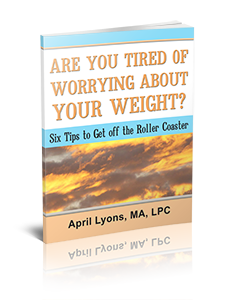PTSD self help will guide you towards the present moment. It’s fine to let your mind wander. But where trauma exists, you may find it difficult to wander in a healthy way.
Problems often arise when both the past and the future seem to tug at you as you try to recover. So much emotional damage, shame, or resentment may lie in the past. Yet, the future may already appear to be filled with uncertainty and worry. It's in the present moment — the here and now — where you can find hope and promise. Right now is where productive perspectives about your safety, capabilities, and potential can live and thrive.
The Power of the Moment
In our age of financial upset, racial injustice, political division, and global pandemics, it's become urgent that we learn to appreciate and engage the here and now. How? We can make the most of the present when we accurately assess what we feel, think, want, and believe. Our minds and bodies are best geared toward the present. We do best and make the most of our relationships when we are able to discharge the tension and stress in our bodies and leave negativity behind. We make the best choices, choose satisfying relationships, and contribute optimally when we grasp that "now" is when we have the most influence.Of course, we factor in past experiences and future expectations, but "here and now" are all any of us really have.
5 PTSD Self Help Tips for Staying in the Here and Now
What is happening here and now is what is real. Consider these strategies for finding peace in the present
1. Deactivate Your Inner “Automatic Pilot”
Our daily patterns can become so habitual that we barely even notice them. We move and react without stopping to assess what's happening or the connections we're making. The automatic behaviors we resort to when we feel overwhelmed deserve attention. We often ruminate on the past instead of consciously acknowledging and investigating our reactive, unhelpful rituals. The here and now is hard to engage without awareness. Notice your habits. Don’t take any actions for granted — even if it is cooking, cleaning, grooming, shopping, etc. Pay attention to what you say to yourself. Work with your therapist to actively choose behaviors and responses.
2. Practice Meditation and Deep Breathing
This is a common recommendation because it works. We so often get swept up in emotion, memories, and reactivity after trauma. It may seem impossible to simply sit still. The physical discomfort and overwhelm require time for recalibration and balance. This is unlikely to just work itself out.
Trauma teaches the body to brace and clamp down. Set aside time, even just 10 minutes a day, to open your mind and body. Give yourself the time and space to observe your reactions and emotions compassionately. Without judging, allow them to come and go. Diaphragmatic breathing techniques used simultaneously helps signal to your body that you’re not actually in danger. Relax and let your throughs and breath flow freely.
3. Make the Most of Your Senses
In our tech world, we can become so involved in using just a couple of senses that we forget the value of touch, smell, and taste to help us feel grounded in the here and now. Use all of your senses to do more than just hold your attention the way our screens do. Instead, get out in nature and feel the bark of a tree, smell the grass, trace a cloud with your eyes, listen for birds, and taste the tartness of a cool glass of lemonade. Wherever you are focus on being there in literally every sense. This way of grounding your self in the present can harmonize your body and mind, aiding, calm, and soothing the fight or flight sensation that can rise with traumatic memories.
4. Move for PTSD Self Help
Find ways to stop fighting your body. Move with it. Dance, Stretch, Stroll. The idea is not to test your athleticism but to enjoy how your body connects in the present time. You aren't competing or training, just enjoying the way your body feels, supports you, and empowers you. Whatever activity you do, try to be conscious. Feel how your body accommodates and responds. Think about how the balance you feel is linked to the safety and control you capably maintain. Fully enjoy the nuances of each movement and appreciate your abilities.
5. Use the “Now I Am” Narration
If it feels almost impossible to stay in the moment, try speaking it out loud (or at least to yourself). Begin with “Now, I am…” and then fill in the blanks with the single task you are performing or feeling you are experiencing. You might say "Now I am cooking a healthy dinner" or, "Now I am safe and surrounded by family."
The Best Place and Time to Seek PTSD Self Help? Here and Now
If you find it difficult to find the here and now, you're not alone. Many others are struggling with the same concerns, help is available. Please reach out for guidance. Committing to therapy is a well-traveled path to new perspectives and more productive choices. Let’s do the work together so you can reap the benefits that start today. Contact us for a free consultation and learn more about PTSD Treatment.


